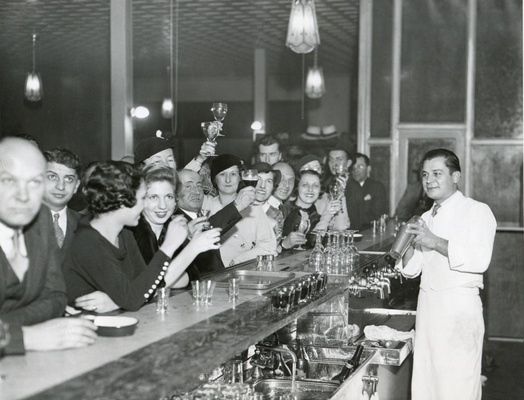The Eighteenth Amendment may seem irrelevant today, as it was overturned by the Twenty-first Amendment. However, it offers a valuable lesson about the only proper way to correct or change the Constitution.
This week marked the 106th anniversary of the passage of the Eighteenth Amendment, which prohibited the “manufacture, sale, or transportation of intoxicating liquors.”
Conceived by the Anti-Saloon League, the amendment was paired with the National Prohibition Act (also known as the Volstead Act), which aimed to enforce the ban.
Prohibition is often remembered for the iconic images of New York officers pouring barrels of alcohol into a sewer. However, instead of curbing demand, the amendment sparked the rise of illegal bootlegging operations and organized crime.
In 1933, the Twenty-First Amendment repealed Prohibition, becoming the only amendment passed by state ratifying conventions rather than state legislatures.
Although most history books pass over this unusual event without comment, it serves as an insightful look into the constitutional amendment process. When lawmakers in the early 1930s sought to end Prohibition, they understood that it could not be achieved through presidential fiat, judicial activism, or mere legislative action but by pursuing a constitutional amendment.
Amending the Constitution is the only permissible way to alter our founding document's meaning or text.
While this may seem straightforward, government officials have been expanding the federal government's power beyond the scope of the Constitution for decades without bothering to amend it.
The Founding Fathers expressly warned against this. Choosing simply to ignore the Constitution, they believed, would enable tyrants to overstep their bounds.
Just as opponents of the Eighteenth Amendment had to repeal it by amendment before they could legislate against it, the same applies today, for example, to opponents of the Second Amendment.
The meaning of the text is unmistakably clear. “A well-regulated Militia, being necessary to the security of a free State, the right of the people to keep and bear Arms, shall not be infringed.” To in any way infringe upon that right is unconstitutional.
If gun-control proponents wanted to regulate the firearm industry, they would have to enact an amendment repealing the Second Amendment. However, they know that such an amendment would never garner three-fourths approval from the states, which is why they simply ignore our founding document and enforce their unconstitutional agenda.
The Convention of States movement, which seeks to amend the Constitution using the inter-state convention method outlined in Article V, recognizes that the only way to enshrine the Founders’ original intent for the supreme law of the land is by proposing amendments that roll back decades of federal growth and judicial activism.
Our resolution, which has already been passed by 19 of the 34 necessary states, calls for a convention to propose amendments limiting federal power, spending, and terms of office. Proposed amendments that pass out of the convention would then go back to the states for ratification.
In the meantime, if we fail to act, the federal government will continue to violate the Constitution on a near-daily basis without the consent of the people.
The Eighteenth and Twenty-first Amendments offer timely lessons about the Founders’ process for altering the Constitution, which requires majority support from “We the People.” To help us stop the federal government from trampling the Constitution, sign the COS petition below and support the Article V movement!
Alcohol and Article V: The Eighteenth Amendment
Published in Blog on January 17, 2025 by Jakob Fay






